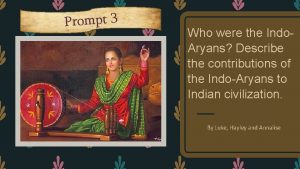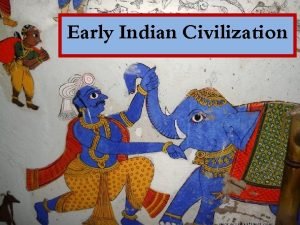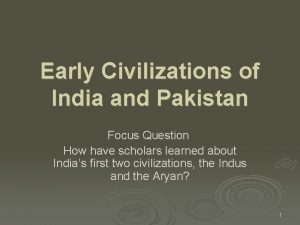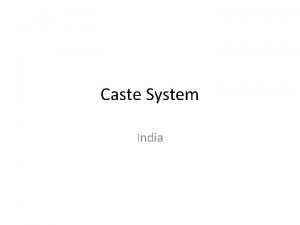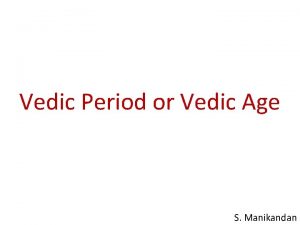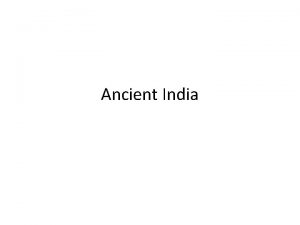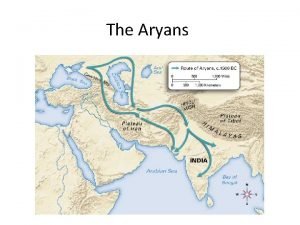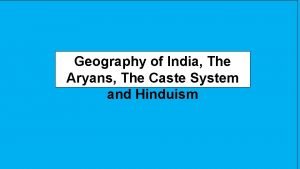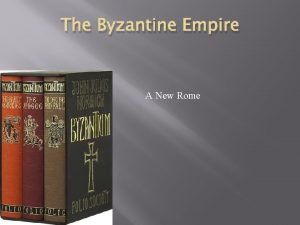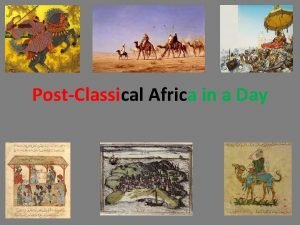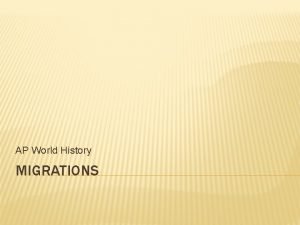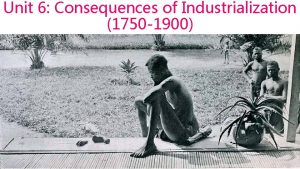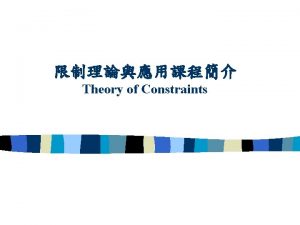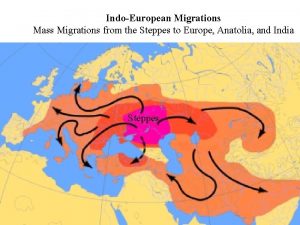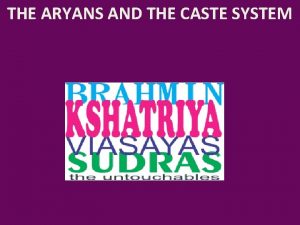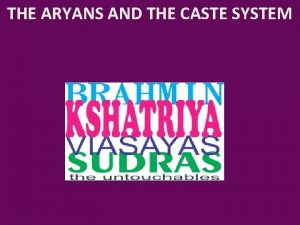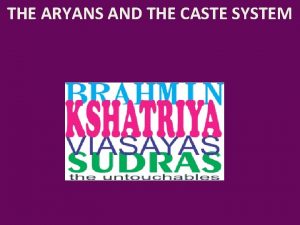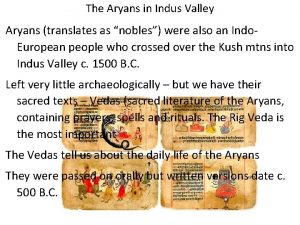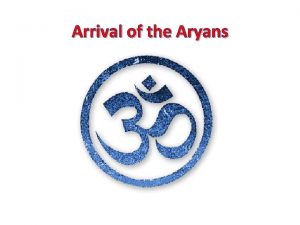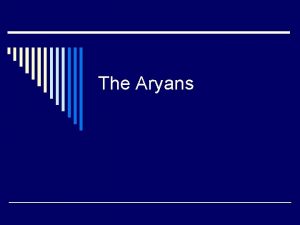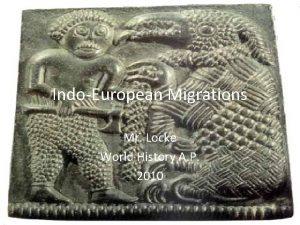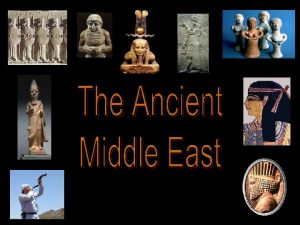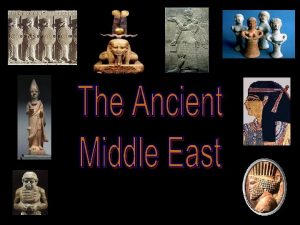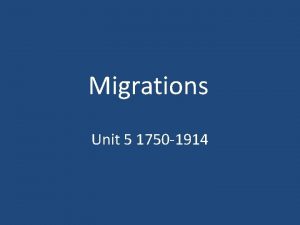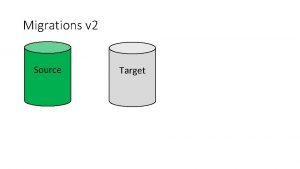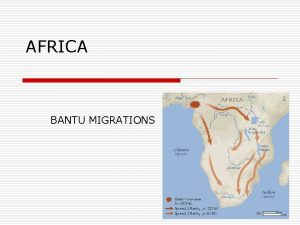IndoEuropean Migrations Focusing on the Aryans and the

















- Slides: 17

Indo-European Migrations Focusing on the Aryans and the Development of Hinduism

The Indo-Europeans Influential c. 3000 -1000 BCE Common family of languages Homeland in steppes around modern Ukraine, north of the Black and Caspian Seas Domesticated horses c. 4000 BCE Acquired bronze working from Mesopotamia c. 3000 BCE Developed wheeled vehicles for horses soon after 3000 BCE Economic and military advantages from the horse powered vehicles This advantage facilitated Indo-European dominance when encountering other peoples Aryo- Proto-Indo-European: Nobleman, Lord Aryan (the Nobles/Lords), Iran, Eire (Land of the Nobles/Lords)

Indo-European languages

Modern Distribution of Indo. European Languages

Migrations Herding horses, cattle and sheep led to population increase Proto-Indo-Europeans fan out over Eurasia c. 3000 BCE- First Indo-European Migrations begin 2300 BCE- Central Europe (Germany, Austria) 2200 BCE- Greece 2000 BCE- Tarim Basin (East Asia) 1900 BCE- Hittites in Anatolia 1500 BCE- Medes & Persians in Iranian Plateau 1500 BCE- Aryans in Northern India 1200 BCE- Celts in Western Europe (France, British Isles, Iberian Peninsula) 1000 BCE- Italy

War Chariots

The Aryans and Hinduism Aryan conquest of Northern India c. 1500 BCE Vedas- the earliest collections of Aryan Lore, Hymns, Prayers, and Songs Vedas- originally passed down orally, later recorded in writing Vedas- scriptural basis of Hinduism, considered the final authority by many Hindus Rig Veda- earliest Vedic text, composed c. 1500 -1200 BCE Gods have counterparts in other Indo-European pantheons (esp. Iranian, Greek & Roman) Varuna = Uranus – Both from P-Indo-European root, uer- to bind. Varuna binds the wicked, Uranus binds the Cyclopes.

Aryans Invade Northern India Varna system set up by Aryans Varna = color Originally used to keep the dasa/dasyu, the native, dark skinned population, in subjugation Dasa later comes to mean slave

Four Varnas Brahmin Kshatriya Vaishya Sudra 5 th Group, which was outside of the system

Brahmin Priests

Kshatriya Warriors/Administrators

Vaishya Farmers/merchants

Sudra Peasants/Menial Laborers

Untouchables 5 th Group, which was outside of the system. Untouchables

Dharma Core concept behind Varna System Duty, Virtue, Law Dharma is specific to Varna Fullfilling the Dharma of your Varna leads to good Karma

Reincarnation Cycle of Rebirth

Two great Epic Poems in Hinduism Ramayana Mahabharata In their final form c. 200 CE Provide common ideals for Hindu life Reflect culture and civilization of ancient India
 Who were the aryans
Who were the aryans Indigenous aryans
Indigenous aryans Subcontinent
Subcontinent Caste draw
Caste draw Brahmanas meaning
Brahmanas meaning Aryans defintion
Aryans defintion Aryans definition
Aryans definition Aryans caste system
Aryans caste system Byzantine definition
Byzantine definition Bantu migrations
Bantu migrations Types of migrations
Types of migrations Types of migrations
Types of migrations Les causes de la migration bantu
Les causes de la migration bantu Bantu migrations definition
Bantu migrations definition Unit 6: global migrations of 1750-1900
Unit 6: global migrations of 1750-1900 5 focusing steps
5 focusing steps Focusing on broad organizational needs
Focusing on broad organizational needs Isoelectric focusing
Isoelectric focusing
